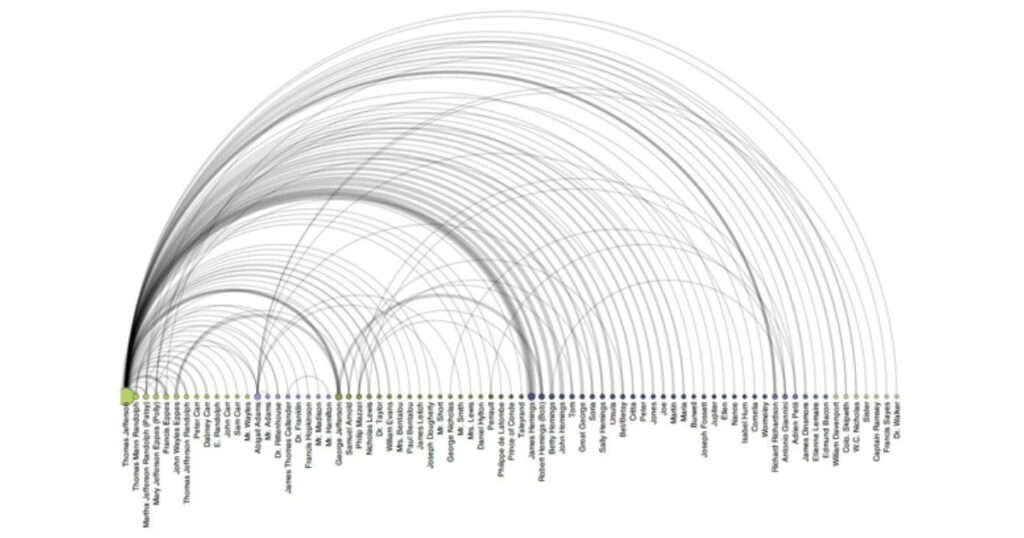The concept of factorials might seem straightforward at first glance, but delving into the factorial of 100 unveils a universe of complexity and awe-inspiring numbers. The factorial of a number, represented by n! is the product of all positive integers up to that number. For 100, this means multiplying every number from 1 to 100 together. The result is a staggeringly large number that stretches beyond ordinary comprehension, manifesting the sheer scale of exponential growth. With i58 digits, this vast number challenges our understanding of size and has profound implications in mathematics and computer science, particularly in areas involving permutations and combinations. Vastness
Understanding the factorial of 100 is about more than grappling with a large number; it’s about appreciating the boundaries of mathematical and computational feasibility. The factorial of 100, for example, can represent the number of ways to arrange 100 distinct items, from books on a shelf to the order of a deck of cards. This concept is pivotal in understanding complex algorithms that underpin modern computing processes, from data analysis to machine learning.
Moreover, the factorial of 100 serves as a gateway to advanced mathematical concepts such as Stirling’s approximation, which provides a way to estimate the logarithm of a factorial and is crucial in fields like statistical mechanics and entropy calculations. Exploring this vast number not only underscores the limitations of human intuition when faced with large scales but also enhances our understanding of mathematical structures that define the world around us. It perfectly exemplifies how a simple mathematical concept can unfold into a rich tapestry of applications that bridge theoretical and practical realms.
Introduction to Factorials: Understanding the Basics
Factorials, denoted as n! represent the product of all positive integers up to a given number n. This concept is foundational in mathematics and is a cornerstone for more complex theories in permutations and various equations. The factorial function grows exponentially; as the value of n increases, the factorial of n rapidly scales to unimaginably large figures, highlighting the exponential nature of factorial growth.
For beginners, the factorial of a small number like 5 is easy to compute manually (5! = 120). However, as numbers grow, the calculation becomes daunting due to the rapid increase in the number of multiplications required. This introduces students and mathematicians to exponential growth and scalability in problem-solving.
On the Scale of 100!: Visualizing a Monumental Number

The factorial of 100, represented as 00, is so large that it defies simple comprehension. With 158 digits, it eclipses typical large numbers encountered daily, illustrating how quickly factorials can grow. Visualizing such a number can involve comparisons or graphical representations, which often still fall short of genuinely conveying its magnitude.
In perspective, if every digit of 100! were a second, you’d spend more than quadrillions of years counting. Such exercises help in understanding the vast scale at which mathematical functions can operate, stretching far beyond the realm of everyday numbers and into the realm of abstract mathematics.
Mathematical Significance: Why Factorials Matter
Factorials play a crucial role in various mathematical disciplines. They are essential in areas such as series expansion, algebra, and, most notably, combinatorics, where they describe the number of ways in which objects can be arranged. The concept of factorials provides a structured way to quantify complexity in mathematical terms, serving as a building block for more advanced mathematical constructs.
Moreover, the properties of factorials are used to prove manvitalnt theorems and identities in mathematics, such as the binomial theorem and Taylor series expansions. Understanding factorials thus provides insights into the behavior of numbers at large scales and helps to cement foundational concepts used throughout higher mathematics.
Practical Applications: From Statistics to Computer Science
In statistics, factorials determine possibilities in scenarios involving permutations and combinations, like lottery probabilities or arranging items. In computer science, understanding factorials is essential for algorithm design, particularly in sorting algorithms and data structure operations, where operations of all possible outcomes are necessary.
These applications show how factorials bridge the theoretical with the practical, solving real-world problems involving large data sets and complex systems. As such, factorials are theoretical constructs and tools that drive analysis and innovation in fields that rely heavily on data and precision.
The Challenge of Computation: Handling Large Numbers

Computing large factorials like 100 presents significant challenges due to their sheer size. Due to memory and performance limitations, traditional computing methods can struggle with such large numbers. This necessitates using sophisticated algorithms and programming techniques that can handle large integers efficiently.
Optimizations such as memoization or efficient multiplication algorithms are crucial when dealing with large factorials in computational settings. These methods help manage the computational load and ensure accuracy in results, which is essential to both academic and practical applications.
StStirling’spproximation: Estimating the Unimaginable
Stirling’s approximation is a powerful tool for estimating the factorial of large numbers. It provides a formula that approximates the logarithm of a factorial, which is particularly useful when the actual computation of the factorial is impractical due to its size. This approximation is vital in statistical mechanics, where factorials occur frequently in mathematics but are too large to compute directly.
The approximation uses an asymptotic series, which grows closer to the actual value as the number increases.
Factorials in Probability and Combinatorics
Factorials are foundational in probability theory and combinatorics, providing the means to calculate the number of possible outcomes in various scenarios. For example, factorials can calculate the number of ways to arrange a deck of cards or the different sequences possible when rolling dice. This makes factorials indispensable in game theory, decision science, and any statistical model assessing probabilities.
Whether selecting committees from a larger group or arranging books on a shelf, factorials provide the mathematical framework for systematically handling these selections.
The Role of Factorials in Algorithm Design
Algorithm design often relies on factorials to assess the complexity and efficiency of operations, particularly those involving permutations and combinations. For instance, sorting algorithms like Heap’s algorithm use factorials to efficiently determine the number of iterations required to generate permutations.
Beyond Numbers: Factorials in Real-World Scenarios

Read Also:Written vs. Printed: Exploring the Key Differences and Benefits of Each Medium
Beyond pure mathematics, factorials have practical applications in everyday scenarios and industries. Their use is widespread, from scheduling software that organizes shifts based on worker availability to logistics algorithms that determine the most efficient delivery routes.
Even in fields like genetics and epidemiology, factorials help calculate the probability of genetic combinations and the spread of diseases through complex populations. This wide range of applications shows how a concept from abstract mathematics can be instrumental in solving diverse and complex real-world problems.
Conclusion: The Infinite Potential of Factorials
Factorials, though a simple concept at their core, open the door to many applications in theoretical and applied mathematics. Their ability to simplify complex permutations and combinations into manageable numbers demonstrates their power and utility. As we continue to explore the depths of mathematical theory and its applications, the role of factorials remains indispensable, bridging the gap between abstract theory and practical application in countless ways. Their study enriches our understanding of mathematics and enhances our capability to solve real-world problems with precision and efficiency.
FAQs
What is a factorial?
- A factorial, denoted by n! represents the product of all positive integers up to a number n. For instance, 5! (5 factorial) is 1 × 2 × 3 × 4 × 5 = 120.
How do you calculate the factorial of 100?
- To calculate the factorial of 100, multiply all the integers from 1 to 100. This can be done using computational tools or software designed to handle huge numbers, resulting in a number with 158 digits.
Why is the factorial of 100 significant in mathematics?
- The factorial of 100 is significant because it is used in fields such as combinatorics for calculating permutations and combinations, providing insights into the arrangement of large sets.
Can the factorial of 100 be visualized?
- Due to its enormity, visualizing the factorial of 100 in terms of its actual value is challenging. However, it can be conceptually visualized through comparisons or logarithmic scales to show its growth relative to smaller factorials.
What are some practical applications of understanding factorials?
- Factorials are used in various practical applications, including algorithm design, probability calculations, statistical data analysis, and anywhere else where combinations and permutations are necessary.
How is the factorial of 100 used in computing and algorithms?
- In computing, the factorial of 100 can help understand the complexity and limits of algorithms, especially those involving data organization and sorting, where all possible outcomes need to be considered.
What are the limitations of computing the factorial of 100?
- The primary limitation in computing the factorial of 100 is handling such a large number, as it requires substantial computational power and specialized algorithms to manage and manipulate without errors.
Is there a straightforward way to approximate the factorial of 100?
- Yes, Stirling’s approximation is often used to estimate the factorial of large numbers. It provides a close approximation that is more manageable and easier to calculate than the exact factorial.
How does understanding the factorial of 100 help in advanced mathematics?
- Understanding the factorial of 100 aids in advanced mathematical concepts like series expansions and helps in solving complex problems in statistics, probability, and theoretical computer science.
What is the biggest challenge when teaching about the factorial of 100?
- The biggest challenge is conveying the scale of the number and its implications due to its vast size and difficulty relating it to everyday mathematical operations.
CONCLUSION
In exploring the vastness of what the factorial of 100 means, we uncover several extraordinary magnitmagnitude symbosymbolsathematical depths and practical utility. The factorial of 100 extends far beyond its initial definition, influencing fields from computer science to combinatorics and illustrating the power of mathematics to describe and solve complex problems. As we delve into such large-scale numbers, we better understand mathematical principles and appreciate their limitless possibilities in both applications. This journey through the realm of factorials reinforces the profound impact of seemingly simple mathematical concepts on our understanding of the world.
